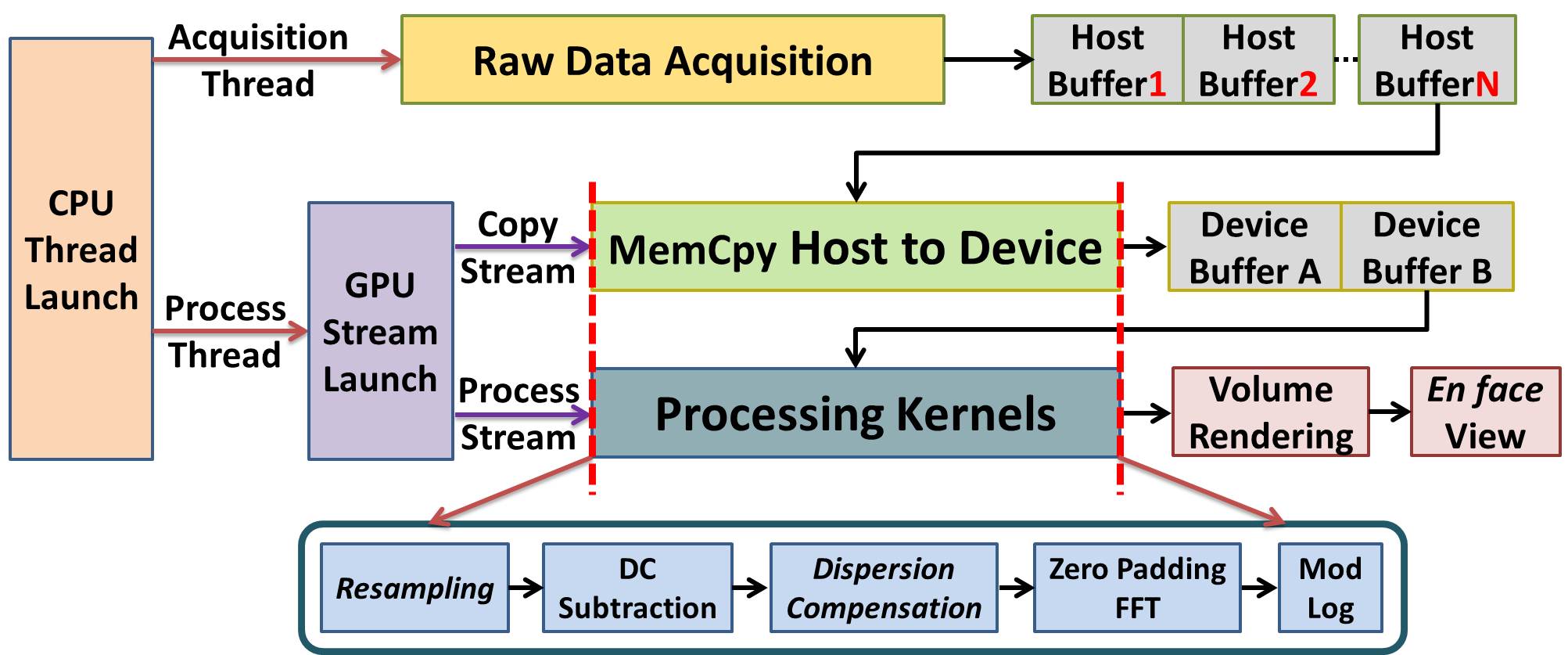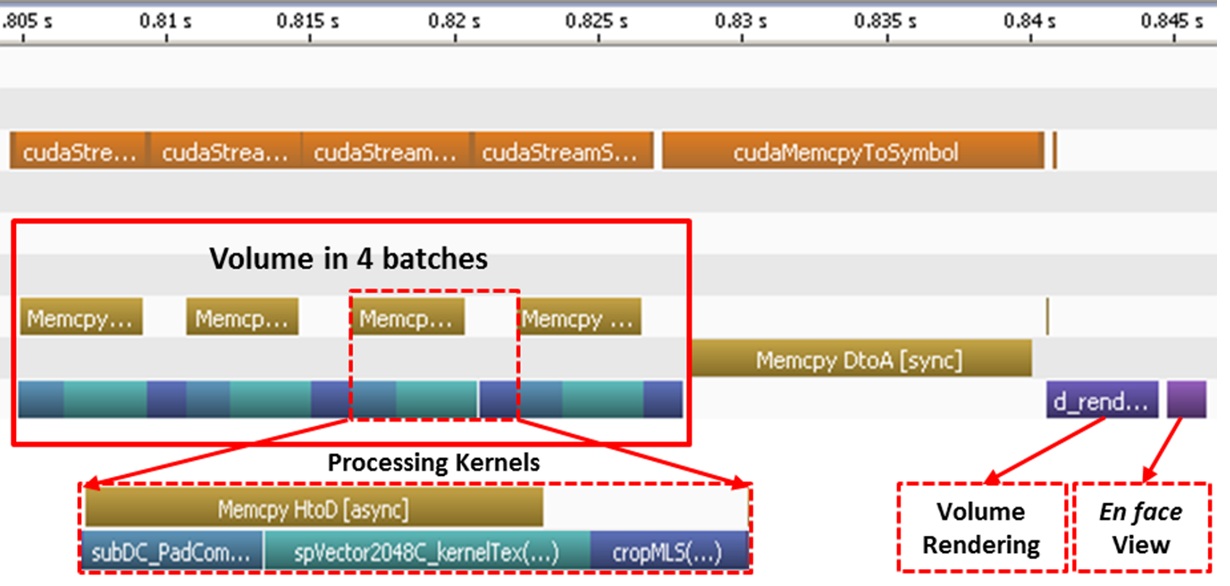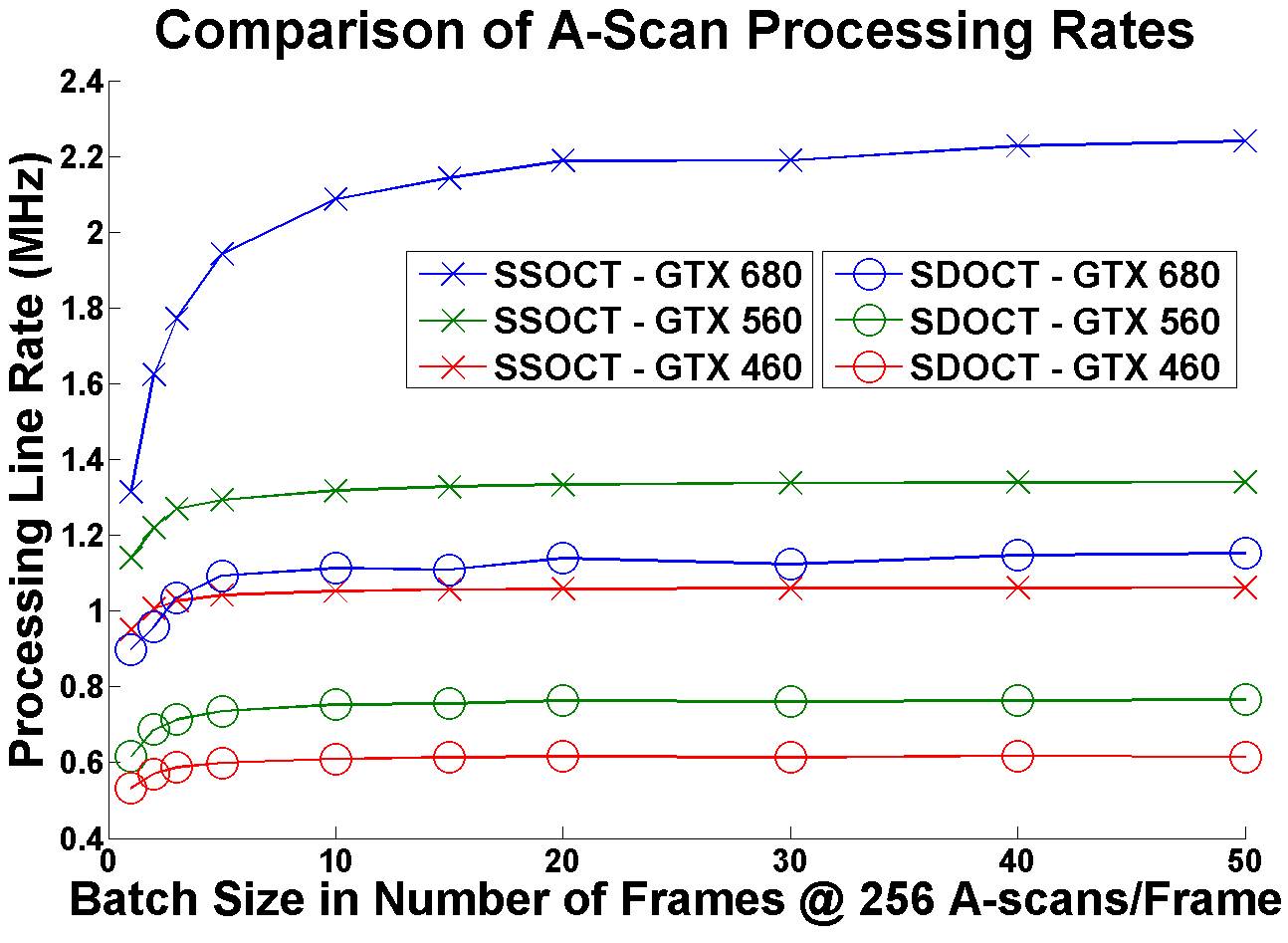GPU Accelerated OCT Processing at MHz A-Scan Rate and High Resolution Video Rate Volumetric Rendering
In this paper, we describe how to highly optimize a CUDA based platform to perform real-time processing of optical coherence tomography interferometric data and 3D volumetric rendering using commercially-available cost-effective graphic processing units (GPUs). The maximum complete attainable axial scan processing rate (including memory transfer and displaying Bscan frame) was 2.24 megahertz for 16 bits pixel depth and 2048 FFT size; the maximum 3D volumetric rendering (including B-scan, en face view display, and 3D rendering) rate was ~23 volumes/second (volume size:1024x256x200). To the best of our knowledge, this is the fastest processing rate reported to date with a single-chip GPU and the first implementation of realtime video-rate volumetric OCT processing and rendering that is capable of matching the acquisition rates of ultrahigh-speed OCT.
Open Source Projects
The open source projects currently includes working version of File Read and Basler Acquisition. The Alazar and Dalsa code will be uploaded very soon! These projects can be found at:
http://code.google.com/p/fdoct-gpu-code
Please send an e-mail to ksw10@sfu.ca or yjian@sfu.ca for further information.
Figures and Videos
Reference
Y. Jian, K. Wong, M.V. Sarunic. "GPU Accelerated OCT Processing at Megahertz Axial Scan Rate and High Resolution Video Rate Volumetric Rendering", Journal of Biomedical Optics(2012).



